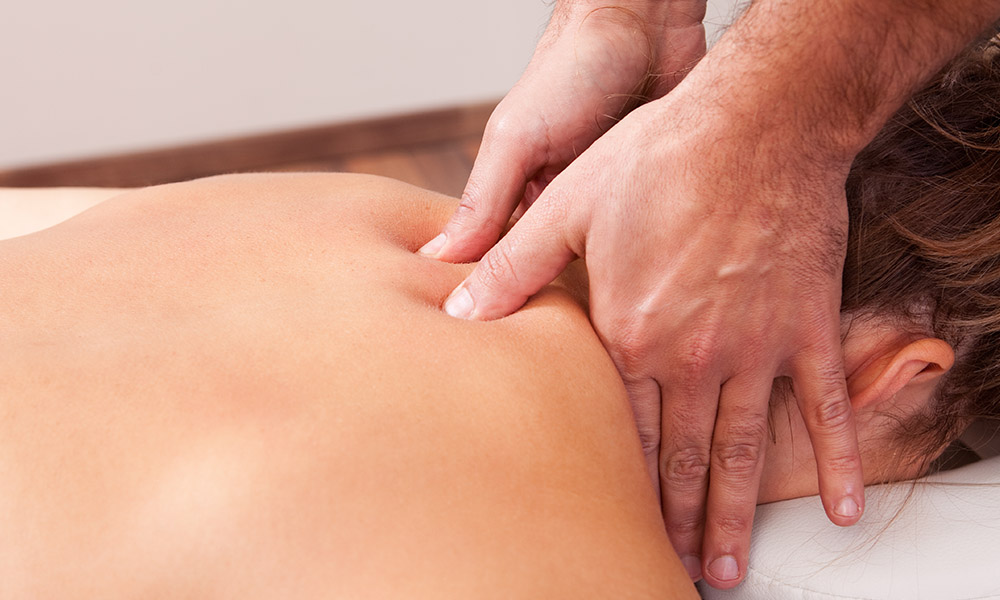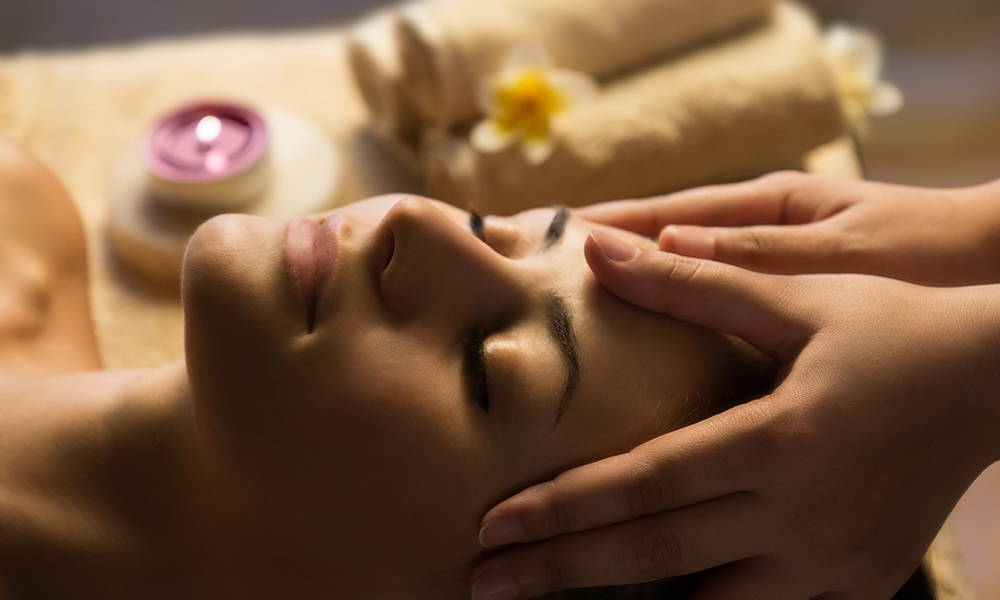The term Ayurveda refers to an ancient Indian system of holistic healing also known as Ayurvedic medicine. Developed over 3,000 years ago, the practice of Ayurveda is based on the idea that human health and wellness are linked to a balance in mind, body, and spirit. Rather than aiming to fight disease like traditional medicine, Ayurvedic medicine focuses on promoting good health by restoring balance.
Ayurvedic practitioners believe that all things in the universe are connected. When your mind, body, and spirit are in balance with the universe, you will enjoy good health. If something upsets the balance, you may feel off. There are a number of Ayurvedic practices that aim to restore balance in the mind, body, and spirit – Ayurvedic massage is one of them.
What is an Ayurvedic Massage?
Ayurvedic massage falls into the practice of holistic healing. In addition to offering similar benefits to traditional massage such as relaxation and stress relief, this type of massage also aims at releasing emotional blockages and restoring balance in the mind, body, and spirit. Though Ayurvedic massage practitioners will primarily use their hands to administer the massage, essential oils play an important role in the experience as well. For this reason, Ayurvedic massage is sometime called an “oil massage.”
In the practice of Ayurveda, the human body is made up of three distinct energies known as doshas: Vata (water and earth), Pitta (fire and water), and Kapha (space and air). Though every person has all three doshas within them and they are meant to be in balance, one is generally dominant. Ayurvedic massage typically involves a specific sequence of techniques but sessions can be tailored to the individual’s dosha in an attempt to restore balance.
How Does it Differ from Traditional Massage?

New massage clients typically fill out an intake form to provide details about their concerns as well as their preferences for certain techniques. The intake form for a traditional massage is fairly simple but Ayurvedic massage involves a more extensive intake process. Through reading the intake form and conducting a short consultation, the practitioner will determine the client’s primary dosha and identify any imbalances that need to be addressed through massage.
One of the primary differences in Ayurvedic massage is the emphasis on essential oils. These oils may be blended with Ayurvedic herbs and can be heated to promote relaxation and other benefits such as detoxification. The practitioner chooses these oils based on the client’s dominant dosha. In traditional massage – especially Swedish techniques – oil is used to reduce friction and facilitate soothing strokes on the skin. In Ayurvedic massage, the oils are heated to the ideal temperature to be absorbed through the skin and bind to toxins so they can be released from the body.
Another aspect of Ayurvedic massage that makes it different from traditional massage is the emphasis on energy and the use of specific movements. Ayurvedic massage practitioners work to clear the energy channels in the client’s body, dislodging toxins to balance the chakras. The techniques used during the massage may vary depending on the individual’s needs and may include movements such as kneading, tapping, and squeezing along with traditional massage strokes. One of the primary goals is to boost circulation and encourage lymphatic drainage.
10 Types of Ayurvedic Massage
Ayurvedic massage is an aspect of holistic healing that can be used in combination with other holistic therapies to restore balance in the mind, body, and spirit. What makes Ayurvedic massage unique is the use of aromatic oils to promote relaxation and detoxification as well as the use of massage techniques involving a combination of pressure, vibration, and specific motions. There are different styles of Ayurvedic massage, each with a unique purpose.
Here’s an overview of 10 types of Ayurvedic massage treatments:
- Abhyanga – The most popular form of Ayurvedic massage, abhyanga involves massaging warmed aromatic oils over the entire body to relax the nervous system and release toxins. Oils are chosen according to the client’s dominant dosha or primary complaint and pressure is applied at certain points on the body to stimulate specific energies and release toxins.
- Udvartana – Typically used to boost circulation and enhance detoxification, this form of Ayurvedic massage involves the use of an herbal paste or dried herbal powders applied to the body in the opposite direction of hair growth. Ideal for those with a dominant Kapha dosha, this form of massage may help reduce fat, cellulite, and fluid retention.
- Basti – Ideal for clients dealing with pain in the lower back, knees, neck, or shoulders, this Ayurvedic massage technique involves applying an herbal dough to the areas of focus. The dough is then filled with mediated oils that soak into the skin to relieve pain and stiffness.
- Gandharva – This form of Ayurvedic massage combines touch with sound therapy. Using warmed herbal oils and crystal singing bowls, the massage therapist vibrates and transforms the body’s cells to improve energy flow and promote vitality.
- Marma – In this Ayurvedic massage, the practitioner focuses on marma points or energy points along the body. Using dosha-specific oils, the practitioner applies light, circular touches to stimulate energy points, awakening the body’s inner healing system.
- Odyssey – This type of Ayurvedic massage involves five Ayurvedic techniques and is designed to work the whole body and mind. Performed by one or two therapists, Odyssey massage begins with dry-glove exfoliation to begin the detoxification process by stimulating the lymphatic system. It is followed by abhyanga to loosen toxins, Vishesh to promote relaxation, and Marma to balance the chakras using dosha-specific oils.
- Pizichilli – Usually performed by two massage therapists, this form of Ayurvedic massage involves continuous streams of herbal oil smoothed onto the body to warm and lubricate the body, boosting circulation, eliminating toxins, and purifying the body’s energy.
- Shirodhara – A form of Ayurvedic head massage, Shirodhara focuses on stimulating the nervous system. Medicated or herbals oils are poured continuously onto the scalp to relieve headache, increase mental focus and clarity, and relieve fatigue.
- Vishesh – A rhythmic massage technique, Vishesh involves using slow, firm strokes to break up adhesions, elongate the muscles, and release impurities. It involves very little oil, allowing a higher level of friction to enable deeper access to the tissues.
- Garshana – This form of Ayurvedic massage doesn’t incorporate oils or herbal powders. The massage is applied using raw silk gloves with light movements that stimulate the lymphatic system to release toxins.
In Ayurvedic medicine, imbalances are typically treated with their opposite. Ayurvedic massage often focuses on identifying a person’s primary dosha and then countering it with specific techniques.
Clients with a dominant Kapha dosha tend to struggle with lethargy, depression, apathy, and obesity so they can benefit from stimulating deep-tissue massage like Vishesh. Those with dominant Pitta doshas often lack focus and may experience irritability, fever, and inflammation. These clients can benefit from Abhyanga and Oddysey massage to release toxins and pacify the nervous system. Vata doshas are energetic and enthusiastic but often experience bouts of fatigue, constipation, and restlessness. These clients can benefit from Marma, Odyssey, and Shirodara massage to balance their energy.
What Are the Benefits of Ayurvedic Massage?
The practice of Ayurveda is not aimed at treating specific diseases but at restoring balance in the mind, body, and spirit. By keeping the energies in balance, Ayurveda seeks to help prevent disease.
Here are some of the potential benefits of Ayurvedic massage:
- Improves blood circulation
- Creates a sense of calmness and contentment
- Stimulates the lymphatic system
- Softens and nourishes the skin
- Relieves pain, stiffness, and inflammation
- May improve weight loss efforts
- Rids the body of accumulated toxins
- Increases energy and vitality
- Reduces stress and mental fatigue
Because Ayurveda is the practice of holistic healing, Ayurvedic massage works best when combined with other Ayurveda principles. Nutrition and exercise, for example, play a key role in supporting total body health and wellness. If you plan to practice Ayurvedic massage, take the time to learn the principles of Ayurveda so you can provide an authentic, holistic healing experience.

